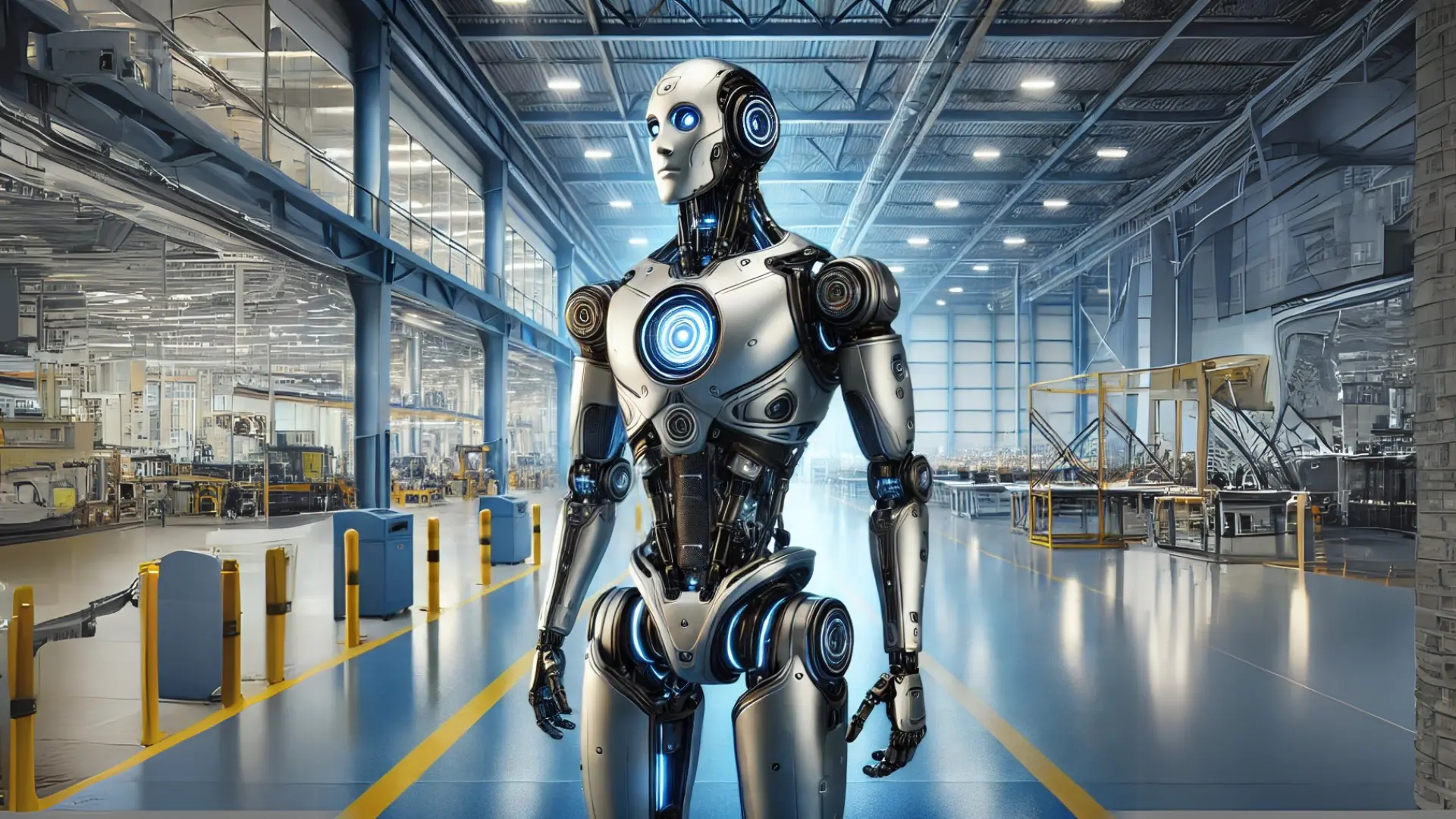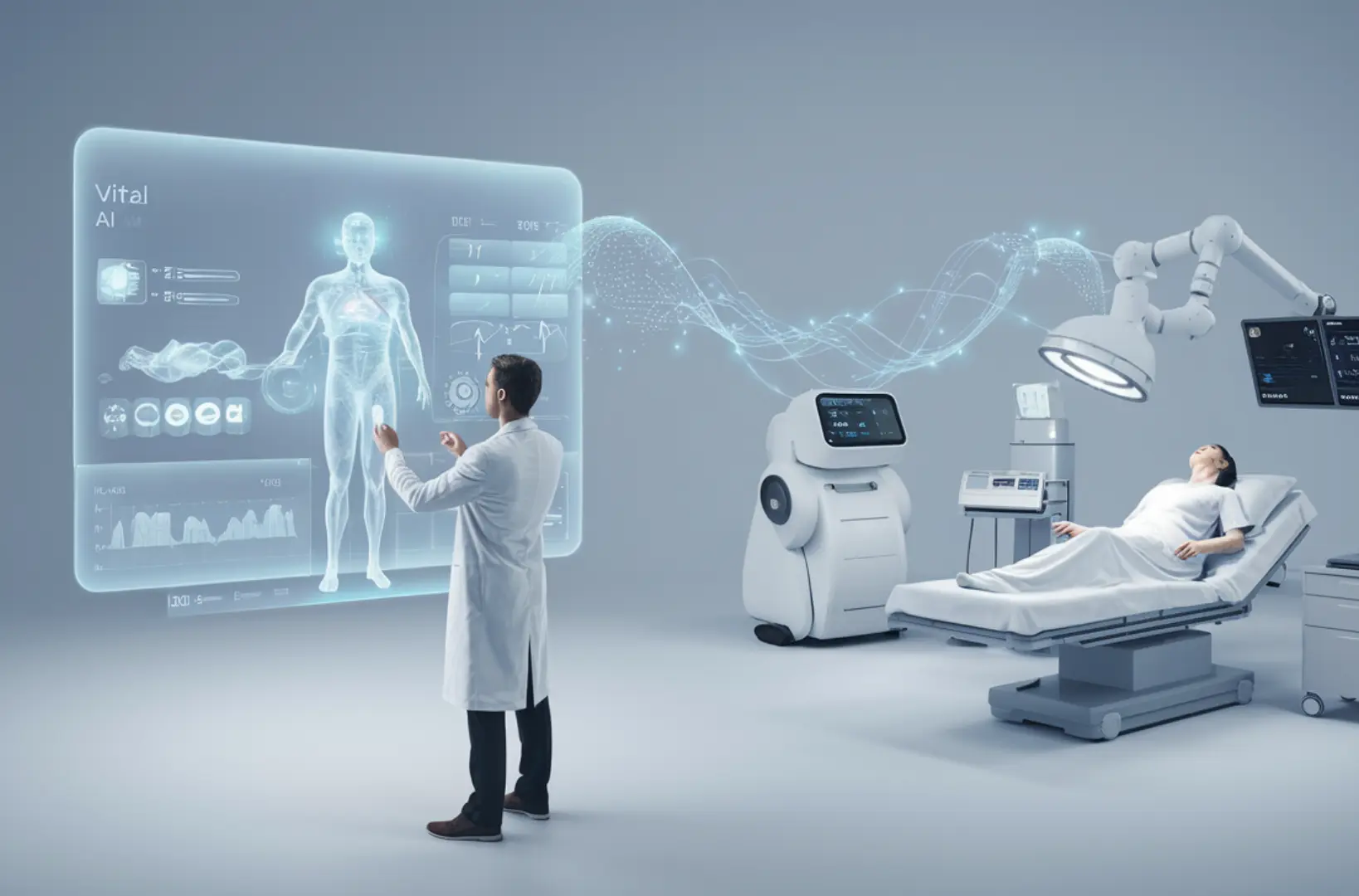As we navigate through 2025, humanoid robots are redefining industries and transforming human-robot interactions. From healthcare to industrial automation, these robots are becoming indispensable in addressing global challenges and enhancing everyday life. Advancements in artificial intelligence, energy efficiency, and human-robot interaction are driving this evolution. The Consumer Electronics Show (CES) 2025 spotlighted groundbreaking innovations, including portable humanoid robots and AI personal assistants. This blog explores key trends shaping the future of humanoid robots, offering insights into their growing influence across sectors and their role in tackling sustainability, disaster response, and ethical considerations. Businesses and individuals must stay informed to leverage these advancements effectively. Read on to discover the dynamic world of humanoid robots in 2025.
1. Exponential Market Growth
The humanoid robot market is on a trajectory of remarkable expansion. According to industry reports, the global market size is projected to increase significantly, fueled by the growing demand for automation across sectors such as healthcare, manufacturing, and logistics. Companies are leveraging humanoid robots to enhance efficiency and reduce operational costs.
The CES 2025 provided a glimpse into the future, with several companies unveiling next-generation humanoid robots. These robots demonstrated improved adaptability, advanced AI capabilities, and practical applications in various industries. As the market expands, affordability and accessibility are becoming focal points, ensuring that businesses of all sizes can integrate robotics into their operations.
2. Integration of Advanced Artificial Intelligence
Artificial Intelligence (AI) continues to be the cornerstone of humanoid robot evolution. The integration of sophisticated AI algorithms enables robots to perform complex tasks with higher efficiency and adaptability.
One of the standout developments showcased at CES 2025 was the rise of AI personal assistant robots designed for home and office use. These robots are capable of understanding natural language, recognizing facial expressions, and even predicting user needs based on behaviour patterns. NVIDIA’s “Cosmos,” a model for developing robotics, exemplifies this trend, enabling developers to create more versatile robots tailored to specific applications.
As AI-powered robots become smarter, they are also becoming more interactive, bridging the gap between humans and machines. This has led to widespread adoption in education, customer service, and entertainment industries.
3. Humanoid Robots in Healthcare
The healthcare sector is witnessing a significant incorporation of humanoid robots. These robots assist in various functions, from patient care to surgical procedures. For example, AI-powered robots are being used to monitor patient vitals, assist in physical therapy sessions, and provide companionship for elderly patients.
Portable humanoid robots are gaining traction in healthcare settings due to their versatility. These robots can be easily transported between locations, making them ideal for use in home healthcare, rural clinics, and disaster response scenarios. With their ability to perform diagnostic tasks and provide personalised care, humanoid robots are helping to bridge the gap in healthcare accessibility and improve patient outcomes.
4. Collaborative Robots (Cobots) in Industrial Automation
The rise of collaborative robots, or cobots, is revolutionising industrial automation. Designed to work alongside human workers, cobots enhance productivity and safety in manufacturing environments.
At CES 2025, several companies showcased cobots with enhanced dexterity and adaptability, making them suitable for intricate tasks such as assembling small components in electronics manufacturing. These robots are also being integrated with AI personal assistant functionalities, enabling them to provide real-time data analysis and decision-making support on production floors.
Cobots are increasingly used in logistics and supply chain operations, where they assist in tasks such as inventory management, packing, and quality control. By working alongside human employees, cobots help reduce workplace hazards and improve overall efficiency.
5. Energy Efficiency and Sustainability
As environmental concerns become more pressing, the development of energy-efficient humanoid robots is gaining momentum. Innovations in low-power processors and renewable energy integration are leading to robots with reduced carbon footprints, aligning with global sustainability goals.
CES 2025 highlighted the emergence of solar-powered humanoid robots designed for outdoor tasks such as agricultural monitoring and disaster relief. These robots are equipped with advanced battery technologies that extend their operational hours while minimizing downtime. By focusing on sustainability, manufacturers are addressing both environmental and economic challenges, making humanoid robots a viable solution for industries looking to reduce their energy consumption.
6. Enhanced Human-Robot Interaction
Advancements in natural language processing (NLP) and AI are making human-robot interactions more intuitive. In 2025, robots are expected to understand and respond to human emotions more effectively, leading to more seamless and natural interactions.
Portable humanoid robots showcased at CES 2025 demonstrated how NLP advancements enable them to act as personal assistants in homes and offices. These robots can schedule appointments, answer complex queries, and even engage in meaningful conversations, making them valuable companions for individuals and families alike.
Moreover, gesture recognition and emotion analysis technologies are further enhancing how robots interact with users. These capabilities make humanoid robots suitable for roles in customer service, where empathy and adaptability are crucial.
7. Humanoid Robots in Disaster Response
The application of humanoid robots in disaster response is becoming increasingly viable. AI-powered robots are being developed to operate in hazardous environments, such as wildfires and earthquake zones, to assist in disaster recovery efforts.
At CES 2025, a portable humanoid robot designed for disaster response garnered significant attention. This robot, equipped with advanced sensors and autonomous navigation capabilities, can assess structural damages, locate survivors, and deliver essential supplies in challenging terrains. These developments highlight the critical role humanoid robots will play in enhancing disaster preparedness and response strategies worldwide.
8. Market Consolidation and Strategic Partnerships
The humanoid robot industry is experiencing consolidation through mergers and acquisitions. For instance, Amazon’s acquisition of iRobot for $1.7 billion aims to enhance its home robotics capabilities, indicating a trend toward integrated smart home solutions.
CES 2025 revealed several partnerships between robotics companies and AI developers, focusing on creating robots that combine cutting-edge technology with practical applications. These collaborations are expected to accelerate innovation and drive the adoption of humanoid robots across various industries.
9. Regulatory and Ethical Considerations
As humanoid robots become more prevalent, ethical and regulatory frameworks are evolving to address concerns such as data privacy, job displacement, and the ethical use of AI in military applications. Discussions are underway to establish global agreements on the responsible use of AI and robotics.
CES 2025 highlighted the importance of transparency in AI algorithms and the need for robust security measures to protect user data. Regulatory bodies are working closely with robotics companies to ensure compliance with emerging standards, fostering trust and accountability within the industry.
10. Humanoid Robots in Education
Education is witnessing a transformative impact with the integration of humanoid robots. These robots are being deployed as teaching assistants, providing personalised learning experiences and supporting students with special needs. Equipped with AI, they can adapt to individual learning styles and offer interactive lessons.
At CES 2025, humanoid robots designed for classrooms showcased features such as real-time feedback, multilingual support, and adaptive learning technologies. These robots are not only assisting teachers but also promoting STEM education by sparking interest in robotics and AI among students. By integrating humanoid robots, educational institutions are paving the way for a more inclusive and innovative learning environment.
Final Thoughts
Humanoid robots are at the forefront of technological innovation in 2025, reshaping industries and enhancing lives. With advancements in AI, energy efficiency, and human-robot interaction, these robots are evolving from niche applications to integral components of modern society. The innovations unveiled at CES 2025 underscore the growing importance of portable humanoid robots and their potential to address global challenges, from disaster response to sustainability. By staying informed and adapting to these trends, businesses and individuals can unlock the immense possibilities of humanoid robotics, driving progress and creating a more connected, efficient future.
Suggested reads:
- Enhancing Health and Safety Inspections
- 10 Fascinating Facts and Future Innovations about Robotics
- Self-Driving Cars Are Thriving

Jahanzaib is a Content Contributor at Technado, specializing in cybersecurity. With expertise in identifying vulnerabilities and developing robust solutions, he delivers valuable insights into securing the digital landscape.







